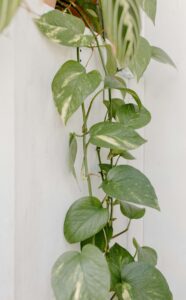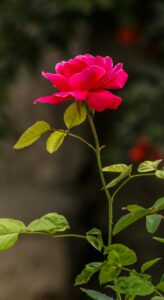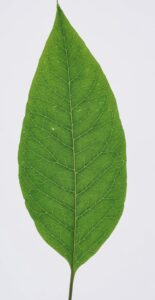NCERT solution 6 : Getting to know Plants –
NCERT SOLUTION 6 : Getting to know Plants –
NCERT SOLUTION Chapter 6 Getting to know plant solution
NCERT SOLUTION Class 6 : GETTING TO KNOW PLANTS –
What is a Plant ?
The Living Organism that produces their own food by the process of photosynthesis are known as plants
based on the different character they possess the plants are classified as follows
1) Herbs
2) Shrubs
3) Trees
1) Herbs –
Plants with green and tender Stems are known as Herbs
these are Generally Short and does not have many Branches
2) Shrubs –
The plants which develops branches near the stem at lower side are called Shrubs
the stem is generally Hard of these plants
3) Trees –
The plants that grow very tall and possess hard stem and have branches in their upper part are called as trees
Apart from the above mentioned types there are also some other types of plant
1) Creeper –
The plant that cannot stand on the ground and are spread on the ground due to their weak stem are known as Creeper

2) Climbers –
The plant which requires support to grow and climb are known as climbers
Parts of the plant –
a) Stem –
It help the upward movement of water
the water and mineral go to leaves through the stem
the other parts are connected to the stem
b) Leaf –
the leaf is place where the photosynthesis is done
the leaf has following parts –
1) Petiole –
the part of leaf which is attached to the stem is known as Petiole
2) Lamina –
The Broad green part of the leaf is called as Lamina
3) Veins –
The various lines formed on the leaf is called as veins
4) Midrib –
The prominent line the middle of the leaf is known as midrib
The design made by Veins in a leaf is called as Leaf Venation
There are 2 types of leaf venation –
1) Reticulate venation –
if the design of veins is net like on the both side of midrib is known as reticulate venation
2) Parallel venation –
if the veins are parallel to one another is called parallel venation
Transpiration –
The process of water come out of the leaves in the form of Vapour is known as transpiration
Photosynthesis –
The process by which Leaves Prepares their food in the presence of sunlight and green coloured substance present in them , in presence 0f water and Carbon dioxide is known as Photosynthesis
Root –
They help the plant in transportation of water
they hold the plant firmly
they Anchor the plant the plant firmly
Parts of the Roots –
a) Tap root –
the main root that grows into the soil is known as the tap root
b) Lateral root –
the smaller roots are called as lateral roots
c) Fibrous root –
FLOWER –
Flower consist of the following parts –
1) Petal
2) Sepal
3) Androecium
4) Gynoecium
Pistil –
The innermost part of the flower is called as pistil

Frequently Asked Question ( FAQ) –
1) What are shrubs ?
Answer – The plants which develops branches near the stem at lower side are called Shrubs
https://en.wikipedia.org/wiki/Shrub
2) What are the examples of shrub ?
Answer – Lemon , Tulsi , Jasmine
3) What are types of leaf venation ?
Answer – There are 2 types of Leaf venation
1) Reticulate venation
2) Parallel venation

Getting to know plant ; Solution –
1) Correct the following statement and rewrite them in your notebook
a) Stem absorb water and mineral from the soil .
Solution – Roots absorbs water and mineral from the soil
b) Leaves hold the plant upright
Solution – Stem hold the plant upright
c) Roots conduct water to the leaves –
Solution – Stem conduct water to the leaves
d) The number of petals and stamens in a flower is always equal
Solution – The number of petal and stamen in a flower may not be always equal
e) If the sepal of a flower a flower are joined together, its petals are also joined together
Solution – If the sepal of a flower are joined together, its petals are Separate
f) If the petals of a flower are joined together, then the pistil is joined to the petal
Solution – If the petals of a flower are joined together , then the pistil may or may not be joined to the petals
Q 3) Can you Find a plant in your house or in your neighborhood , which has long but weak stem ? Write its name , In which category will you place it ?
Solution – Yes , there are many such plants around my house one such is Gourd , we can place it in category of Climbers
Q 4 ) What is the function of stem ?
Solution –
it gives support to the plant
it Conduct the water to the all other plant parts
it also conduct the food the other plant parts
Q 5 ) Which of the following leaves have Reticulate Venation ?
Wheat, Tulsi, maize, grass, Coriander(Dhania),China rose .
Solution –
The Following plants have reticulate venation –
Tulsi, China rose , & Coriander have Reticulate venation
Q 6) If a Plants has Fibrous root , What type of venation do its leaves have ?
Solution – Such plant will have Parallel venation
Q 7) If a plant has leaves with reticulate venation, what kind of roots will it have ?
Solution – if the plant possess such venation it will have a Tap Root System
Q 8) Is it possible for you to find out whether a plant has tap root or fibrous root by looking at the impression of its leaf on a sheet of paper ?
Solution – YES IT IS POSSIBLE !
if we carefully examine the impression of leaf on a sheet of paper we can find out wheather it Tap root or Fibrous root System
Q 9) What are the parts of flower ?
Solution –
The typical flower has following parts
1) Sepals
2) Stamens
3) Petals
4) Pistil
Q 10) From the following plants, Which of them have Flowers ?
Grass, maize, wheat, chilli, tomato, tulsi, peepal , shisham, banyan, mango, jamun, guava, pomegranate, papaya, banana, lemon, sugarcane, potato, Groundnut
Solution –
The following plants have flowers –
Grass , Maize , wheat , chilli, Tomato , Tulsi , peepal , shisham, banyan , mango , jamun, guava, pomegranate, papaya , banana , lemon , sugarcane, potato, groundnut
Q 11) Name the part of plant which produces food. Name the process .
Solution – The leaves of the plants produces the food with the help of chlorophyll and the process is known as Photosynthesis
Q 12) In which part of flower, You will find the ovary ?
Solution – the ovary found in Lowermost and the most swollen part of the pistil of the plant
Q 13) Name the two plants in which one has joined Sepals and other has separate sepals
Solution –
1) Plants with joined sepals – 1) cotton 2) hibiscus
2) Plants with separate sepals – 1) Mustard 2) Rose
https://biosimplified.com/icse-selina-class-8-biology-solution-notes/
